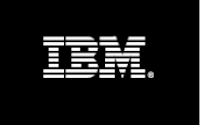Week 10
TOGAF Advantages and Cost
What is TOGAF?
The Open
Group Architecture Framework (TOGAF), established in 1995, is one the most
popular EA tools of today. TOGAF, which is based on iterative process model,
provides approaches to design, evaluate, and build an effective architecture.
The key to TOGAF is Architecture Development Method: a reliable, effective
method to develop architecture, which could meet the business demand of
companies. Even though there are a lot of EA frameworks to choose, TOGAF is
widely used mostly. Over 80 percent of top 50 companies are using the TOGAF and
it support SOA, which provides the possibility of improving current situation
at a lower cost.
Generally
speaking, TOGAF contains the elements as followed:
1.
ADM, as described below, is
used to develop enterprise architecture
Figure1 Architecture Development Method[i]
2.
Architecture contents framework
provides a detail architecture model, including deliverables, elements of
architecture:
Figure2 Architecture content framework
3.
TOGAF Reference Model:
Technical Reference Model (TRM) and Integrated information infrastructure model
(III-RM).
Figure 3 TOGAF reference model
4.
ADM guidelines and techniques provides
a set of guides and principles to apply ADM:
Figure 4 ADM guidelines and techniques
5.
Enterprise continuum provides
approaches for classifying architecture and solution artifacts, both internal
and external to the Architecture Repository, as they evolve from generic
Foundation Architectures to organization-specific architectures.
Figure 5 Enterprise Continuum
6.
Architecture capability
framework provides resources, guidelines, templates and background information
to help enterprise practice improving the architecture.
Figure 6 Mature Architecture Capability
The key advantage of TOGAF is that it not
only provides enterprise a clear map about its future architecture, but also
provides rich resource for an enterprise to refer. Through TOGAF, enterprises
will have a well understanding of its current situation and its capability to practice
the architecture. The cost of TOGAF could be concluded into the following
aspects:
1. Workforce:
Employees in different departments may have to spend some
time adapting to newly developed processes. Some employees have to be allocated
with more responsibilities in the company’s operation.
2. Time:
The transformation from current architecture to future
architecture may take a lot of time, which means that any enterprises may have
to consider the time cost before introducing TOGAF.
3. Finance:
The finance cost would be reflected on the hiring of consultant
and purchasing some TOGAF custom products. With the change of one company’s operation
model, the cost may also reflect on the business process.
4. Risk:
TOGAF does not necessarily guarantee that enterprise would
have a more healthy and practical architecture. Meanwhile, there will be a huge
difference among the consultant and TOGAF products you choose while practicing
TOGAF methodologies, which means that executives of company have to take a full
consideration of every aspects of the company before making any decision in
introducing this EA tools.
[i]
Figure 4.1 – 4.6 cited from Open Group, The Open Group Architecture Framework
(TOGAF) Version 9, 2009,





















